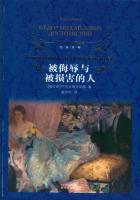First of all, in order to meet the needs of the new era, the Catholic Church began to promote actively and smoothly litur- gical reform at the end of 1980s. In 1986, in the name of the Church Affairs committee of the Catholic Church in China, a suggestion was made that, "in order to conform to the nationalsituation, to meet the needs of the new development, it is neces- sary for us to study the liturgy and make some adaptations. How- ever, this study and adap-tation process involves a huge amount of work and requires good leadership, organization and careful procedure. Therefore, be- fore the Church Affairs committee of Catholic Church in China and BCCCC come out with a unified decision on reform,every place needs to useLatin to celebrate Massand there will be no exceptions. The local Church Affairs com- mittees need to strictly follow this instruction and resist any- thing contrary to it.‘ This was accepted and made effective. Shortly after that, the BCCCC and Church Affairs committee of Catho- lic Church in China issued a joint statement entitled "Additional Guide Lines on Celebrating the Sacraments for Clergy’? It stated:"At the present time, the clergy must use the traditional liturgyand follow the rules. No one should make changes without per- mission from the BCCCC and the Church Affairs committee of Catholic Church in China. On the other hand, the BCCCC granted Shanghai permission to reform the liturgy. Since 1989, Shang- hai began to use Chinese to celebrate Mass. In the meantime, two priests were sent to the Philippines for liturgical training. In1992, the BCCCC formed a special liturgy committee with Cai Tiyuan, the Bishop of Shangtou in Guangdong Province, as its director. Under the leadership of BCCCC, this committee was responsible for bringing together the necessary materials for the new liturgical reform: books for the Mass, rituals for the sacra- ments, music and prayer books. In collaboration with the Church Affairs committee of Catholic Church in China, new guides were promulgated. These two committees were trying to study the needs of China in order to make the liturgy become more alive. In May, a group of 36 priests and two bishops from all over China gathered at the National Seminary in Beijing for liturgy training. The BCCCC invited two priests from Hong Kong to come as instructors. After the training sessions, all the dioceses started similar liturgy training in order that all should master the true meaning of the liturgy for the change to go smoothly. Now, all the parishes in China use Chinese to celebrate Mass.
Secondly, The territories of some dioceses were redefined accordingly. Prior to the founding of the New China, there were137 dioceses. After many changes in the ensuing half-century, some dioceses were not in line with the country"s administrative division and changes in the size of congregations in certain ar- eas, and this motivated the BCCCC to make some alterations in order for the local churches to more easily manage church af- fairs. In November 1986, the BCCCC and the Church Affairs committee of Catholic Church in China passed the "Guidelines for defining Diocesan Territory‘ that stated: "In order for the dio- ceses to more easily manage church affairs and considering the needs of pastoral ministry, all dioceses that are not in line with the government"s city and district territories should readjust the diocesan lines after consulting with the local church affairs’ com- mittee and the neighboring dioceses.‘ For instance, the 11 origi- nal diocese in Hubei Province were combined into five new ones; in Shandong, the original four dioceses of: Yantai, Weihai, Yangu and Linqing, due to the small number of believers, were com- bined into two, Yantai and Liaocheng. In Guizhou province, the original Guiyang, Anlong and Shiqian dioceses were combined into one. As a result, the original 137 dioceses in China were reduced to 97.
Thirdly, normalizing the process of self-select and self-con- secrating bishops. In 1986, the BCCCC and the Church Affairs committee of Catholic Church in China passed the "Guidelines for Selecting Bishops and Ordaining Priests‘? Its first article stated:"Those dioceses, where the needs of the pastoral ministry and the management of church affairs require the presence of bish- ops, should make a request to the Provincial Church Affairs‘ committee. Once the request is granted, the diocesan priests and lay Catholic representatives should pray and ask the Holy Spirit to inspire them to nominate candidates and then go through a voting process. The one who receives over half of the votes is the selected one.’ The second article stated: "The bishop"s candi- date must be a priest who is devout and evangelical, patriotic and obedient to the laws of the country. He should be virtuous and knowledgeable, and one who also support the Three-Self"s. He should care about the spiritual needs of his priests and be good at communicating with people and have their respect. He must be at least 30 years old and been ordained for at least five years. He should be priest with good looks and good health.‘ In May 1993, the BCCCC once again published a "Guideline for Selecting Bishops’, in which the age of the candidate was raised to 35 and it was made it clear that the vote had to be unanimous.
Meanwhile, the candidate had to submit the record of the voting process and his resume to the BCCCC for review. This guideline normalized the system and whole process of Episcopal ordina- tion and offered a clearer requirement for the candidate. Since.
1958, when China began to implement the self-selection and self- consecration of bishops policy, 179 bishops had been consecrated, of whom 70 bishops are still alive at the time of writing.















